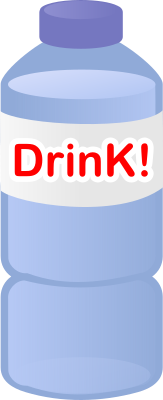CIRCULAR ECONOMY SUCCESS: FINLAND’S RECYCLING PROGRAMME KEEPS BOTTLES AND CANS OFF THE STREETS
https://finland.fi/life-society/circular-economy-success-finlands-recycling-programme-keeps-bottles-and-cans-off-the-streets/
We see how Finland’s deposit system for bottles and cans achieves a recycling rate of more than 90 percent, and how city administrators and event organisers supplement the system with their own resourceful programmes.
Finland’s system for returning beverage containers started in the 1950s, and today almost every bottle and can is recycled. Convenience is the cornerstone of the system’s success.
Finnish residents returned more than two billion bottles and cans in 2020, 93 percent of the total amount purchased in the country. The factors that make this possible include automated bottle-return machines developed decades ago and the expansion of the system to include plastic bottles in the 2000s.
The EU directive on single-use plastics has focused additional attention on bottle recycling and sustainability.
Recycling bottles and cans conserves energy and raw materials, and reduces litter in cities and wilderness areas. Beverage containers become part of the circular economy as their materials are recycled into new containers or reused in other products.
Any bottles that someone happens to leave behind on the street or in a park are snapped up by someone who returns them for the deposit money.

15 Comments
spider solitaire says:
A great idea
Tomi Engdahl says:
Editorial: Glass can be recycled infinitely without losing any of its properties. So why are so many countries still burying most of their glass as landfill by the tonne? https://go.nature.com/3bF18Vc
Tomi Engdahl says:
Glass is the hidden gem in a carbon-neutral future
https://www.nature.com/articles/d41586-021-02992-8?utm_source=fbk_nat&utm_medium=social&utm_campaign=nature
Recycling glass does not degrade it, and manufacturing it can be carbon-free. So why are many countries still burying glass in the ground?
Tomi Engdahl says:
the plastic bottle plastic is pretty well recycled. The plastic bottle return machines crush the bottles. Clear plastic and colorful caps are separated. The clear plastic is converted back to plastic granules that go to factories that make new bottles or other products. Caps are made recycled for some other uses
In Finland also many other plastics are recycled. There are many products made of recycled plastix, for example plastic shopping bags, trash bags, plastic-wood composite etc..
https://www.lt.fi/en/media/bulletins/finland-cutting-edge-of-modern-plastic-recycling
The collection of recyclavle plastic from households works so well that Finland now lacks the capacity to process all of the discarded plastic sorted by households.
https://yle.fi/uutiset/osasto/news/struggling_to_keep_up_finland_exports_plastic_waste/11224544
Tomi Engdahl says:
https://hackaday.com/2021/11/16/microplastics-are-everywhere-land-sea-and-air/
Tomi Engdahl says:
https://ec.europa.eu/environment/topics/plastics/single-use-plastics_en
Tomi Engdahl says:
Single-use plastics
https://ec.europa.eu/environment/topics/plastics/single-use-plastics_en
The EU is tackling the 10 single-use plastic items most commonly found on Europe’s beaches, and is promoting sustainable alternatives.
Tomi Engdahl says:
https://www.lt.fi/en/media/bulletins/finland-cutting-edge-of-modern-plastic-recycling
Tomi Engdahl says:
Struggling to keep up, Finland exports plastic waste
Experts criticise Finland for urging residents to recycle plastic the country was not prepared to handle.
https://yle.fi/uutiset/osasto/news/struggling_to_keep_up_finland_exports_plastic_waste/11224544
Tomi Engdahl says:
Suurin osa kodeissa lajitellusta muovijätteestä päätyi poltettavaksi – MOT selvitti, kuinka hyvin muovin kierrätys onnistuu
Fortumin antamat luvut muovinkierrätyksen onnistumisesta eivät ole vastanneet totuutta viime vuosina.
https://yle.fi/uutiset/3-11865230
Tomi Engdahl says:
Single-use plastics
The EU is tackling the 10 single-use plastic items most commonly found on Europe’s beaches, and is promoting sustainable alternatives.
https://ec.europa.eu/environment/topics/plastics/single-use-plastics_en
Tomi Engdahl says:
https://muovia.com/ekologisuus_ja_muovi/
Tomi Engdahl says:
https://hackaday.com/2022/01/15/recycling-soda-bottles-into-filament-to-print-smaller-soda-bottles/
Tomi Engdahl says:
https://ec.europa.eu/research-and-innovation/en/horizon-magazine/we-eat-and-inhale-thousands-bits-plastic-every-year-now-what
Tomi Engdahl says:
https://www.iflscience.com/editors-blog/does-tapping-a-can-of-fizzy-drink-really-stop-it-foaming-over/
When you open a can of fizzy drink, the refreshing “hiss” is the result of gas bubbles escaping from the liquid as a result of a change in the solubility of the carbon dioxide (CO2) in it. This change occurs due to the pressure inside the can decreasing from ~3 bar (can closed) to 1 bar at atmospheric pressure (can open). The solubility of CO2 in water reduces from ~4.5g in one litre of water at ~3 bar, to ~1.5g at atmospheric pressure, something that is described by Henry’s Law.